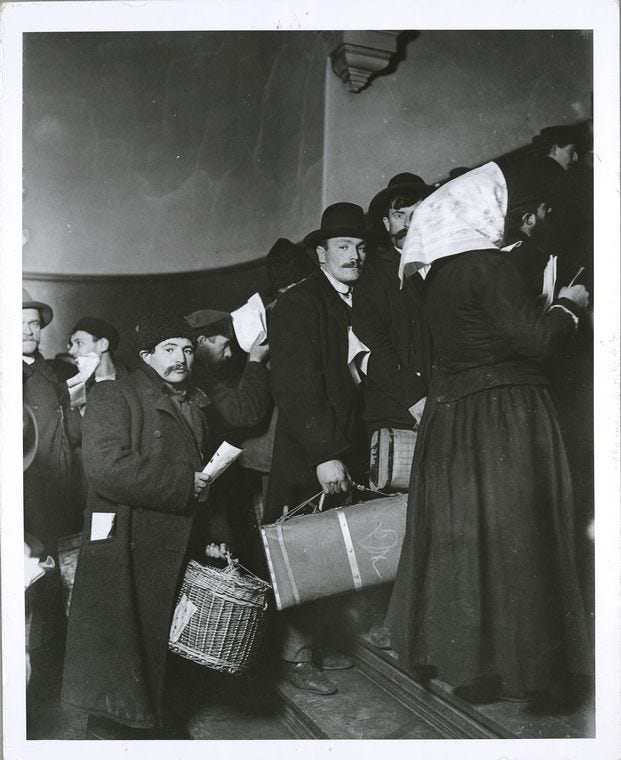Op-Ed: A fading lamp beside the golden door
Immigration is central to America's identity — and for most of us, to our family histories. As we turn away from that legacy, who will we become?
By Gail Buckland

In the 1980s, I was the curator of a photography exhibit presented by the New-York Historical Society to mark the 100th anniversary of the Statue of Liberty. In storage at the base of the statue I discovered a cache of photographs, taken at Ellis Island, between 1905 and 1920 by civil servant Augustus Sherman. The photographs are of immigrants from a wide range of countries coming to our shores. Their clothes were different; their complexions were different. And certainly most did not speak English.
They came for a single purpose: to have a better life and to become Americans.
Any immigrant not white, not Protestant and not from a Northern European country was looked on with suspicion, if not outright contempt and hatred. Italian, Irish, Chinese, Polish – many people were often treated almost as sub-human. “No Irish Need Apply” signs really did appear in storefronts.
Today, the Sherman photographs hang at Ellis Island, the port of entry that welcomed my grandfather and maybe your ancestors, too.
Many immigrants, like my grandfather, came by choice as penniless dreamers. Jacob Greene came from the Ukraine in steerage, escaping the pogroms that were killing Jews. He arrived around 1898, after Emma Lazarus wrote her poem “The New Colossus” but before her famous words were engraved on a plaque at the base of the Statue of Liberty:
“Give me your tired, your poor,
Your huddled masses yearning to breathe free,
The wretched refuse of your teeming shore.
Send these, the homeless, tempest-tost to me,
I lift my lamp beside the golden door!"
He became a successful pickle man on the Lower East Side, a “profession” my dad followed.
My dad was drafted on his wedding day, October 4, 1941. He saw my older sister only for a few hours in the hospital before he shipped out and did not see her again for four years. He was fighting Nazis and fighting for the most profound belief he ever held -- that democracy was worth fighting and dying for. Had he died, I wouldn’t be writing this.
I also collaborated on The New York Times bestseller “The American Century,” a book on American political history from 1889 to 1989, which is the second century of the American Constitution. I spent 12 years researching this book, so I know a bit about American history. In the 1930s, the slogan “America First” was coined by isolationists who wanted to keep us out of World War II. Many were also, like Charles Lindbergh and Henry Ford, anti-semites and/or even Nazi sympathizers. The Committee to Defend America First had a lot of corporate and personal wealth behind it, along with some racist, prominent clergy. Father Charles E. Coughlin peddled a form of fascism similar to Mussolini’s. Forty-five million Americans listened to Reverend Coughlin every Sunday afternoon in the 1930s. We should remember the origin of “America First” when we hear it thrown around these days.
At the inaugural prayer service on Jan. 21, Bishop Mariann Edgar Budde, the leader of the Episcopal Diocese of Washington, said these words: “The vast majority of immigrants are not criminals. I ask you to have mercy, Mr. President, on those in our communities whose children fear that their parents will be taken away, and that you help those who are fleeing war zones and persecution in their own lands to find compassion and welcome here.”
Unless we are Native American or African American, our forebears came to America by choice. I, for one, am thinking about my family’s history – and my nation’s history. I hope you are, too.
Gail Buckland lives in Warwick, Orange County. She has written or collaborated on 14 books of photography and history. This piece ran in the Times Union of Feb. 9.
Community focused news can only succeed with community support. Please consider the various subscription levels.

